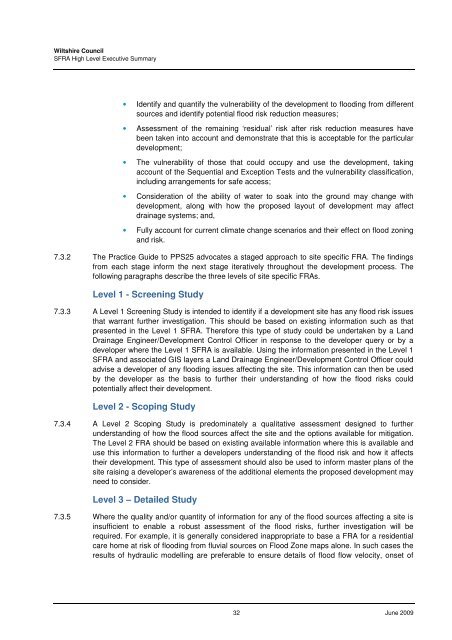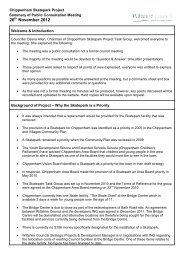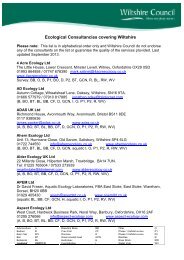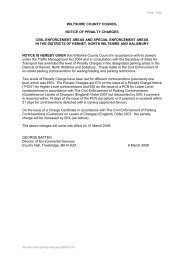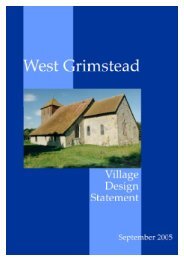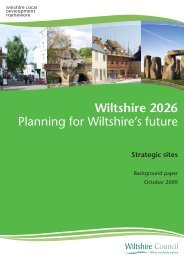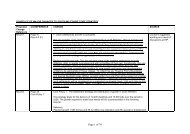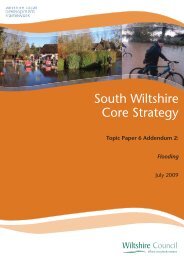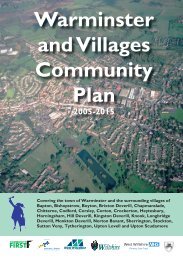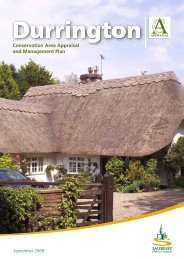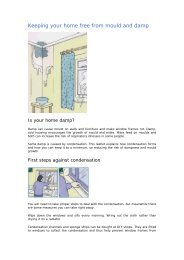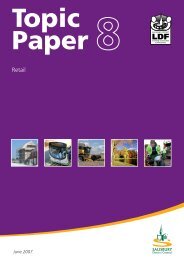Strategic Flood Risk Assessment - Wiltshire Council
Strategic Flood Risk Assessment - Wiltshire Council
Strategic Flood Risk Assessment - Wiltshire Council
Create successful ePaper yourself
Turn your PDF publications into a flip-book with our unique Google optimized e-Paper software.
<strong>Wiltshire</strong> <strong>Council</strong>SFRA High Level Executive Summary• Identify and quantify the vulnerability of the development to flooding from differentsources and identify potential flood risk reduction measures;• <strong>Assessment</strong> of the remaining ‘residual’ risk after risk reduction measures havebeen taken into account and demonstrate that this is acceptable for the particulardevelopment;• The vulnerability of those that could occupy and use the development, takingaccount of the Sequential and Exception Tests and the vulnerability classification,including arrangements for safe access;• Consideration of the ability of water to soak into the ground may change withdevelopment, along with how the proposed layout of development may affectdrainage systems; and,• Fully account for current climate change scenarios and their effect on flood zoningand risk.7.3.2 The Practice Guide to PPS25 advocates a staged approach to site specific FRA. The findingsfrom each stage inform the next stage iteratively throughout the development process. Thefollowing paragraphs describe the three levels of site specific FRAs.Level 1 - Screening Study7.3.3 A Level 1 Screening Study is intended to identify if a development site has any flood risk issuesthat warrant further investigation. This should be based on existing information such as thatpresented in the Level 1 SFRA. Therefore this type of study could be undertaken by a LandDrainage Engineer/Development Control Officer in response to the developer query or by adeveloper where the Level 1 SFRA is available. Using the information presented in the Level 1SFRA and associated GIS layers a Land Drainage Engineer/Development Control Officer couldadvise a developer of any flooding issues affecting the site. This information can then be usedby the developer as the basis to further their understanding of how the flood risks couldpotentially affect their development.Level 2 - Scoping Study7.3.4 A Level 2 Scoping Study is predominately a qualitative assessment designed to furtherunderstanding of how the flood sources affect the site and the options available for mitigation.The Level 2 FRA should be based on existing available information where this is available anduse this information to further a developers understanding of the flood risk and how it affectstheir development. This type of assessment should also be used to inform master plans of thesite raising a developer’s awareness of the additional elements the proposed development mayneed to consider.Level 3 – Detailed Study7.3.5 Where the quality and/or quantity of information for any of the flood sources affecting a site isinsufficient to enable a robust assessment of the flood risks, further investigation will berequired. For example, it is generally considered inappropriate to base a FRA for a residentialcare home at risk of flooding from fluvial sources on <strong>Flood</strong> Zone maps alone. In such cases theresults of hydraulic modelling are preferable to ensure details of flood flow velocity, onset of32 June 2009


